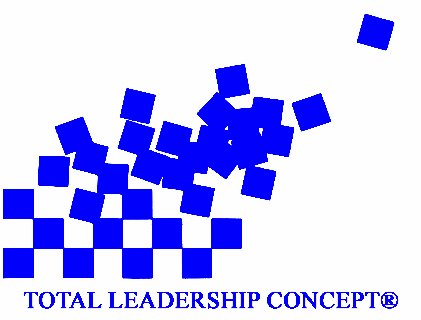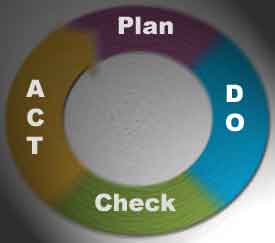
Abilities
Arousal
Attitude
Behavior
Beliefs
Competencies
Engagement
Environment
EI
Experience
Feelings
Intention
Motivation
Nature and genes
Organization
Performance
Performance Improvement
Performers
Process
Results
Skills
Social Pressure
Talent
Understanding
Values
Harvey Mackay once said: "A dream is just a dream. A goal is a dream with a plan and a deadline." And that goal will remain a dream unless you create and execute a plan of action to accomplish it. Every goal that gets accomplished has a good plan behind of it.
Shewhart Cycle

Plan
Next, two key questions must be asked:
- What are all the ingredients necessary for its successful execution?
- What are all the possible forces or events that could hinder or destroy it?
A detailed plan normally includes the who, what, when, where, how, and why. Who will do what? Who does it involve? What are we going to do? When does it start? When does it end? Where will it take place? How will it take place? Why must we do it? What will happen if we do not do it?
Also, the plan must be organized. Organizing is the process of creating and maintaining the conditions for effectively executing plans. It involves systematically defining and arranging each task with respect to the achievement of the objective. It includes three major steps:
- Determine all tasks.
- Set up a structure to accomplish all task.
- Allocate resources.
Determine all tasks
Now, organize all these details into categories, such as needs, supplies, support, equipment, coordination, major tasks, etc. List all the details under the categories. Create a to-do list for each category. This list will become the checklist to ensure everything is progressing as planned.
Do
Plan for obtaining all the required resources and allocate them out. Not having the required resources can stop a project dead in its tracks. For this reason you must closely track and monitor costly or hard to get resources.
Trial the plan through a prototype (experimental scale). This allows you to actually check the plan on a small scale.
Check
The standard means, "is this project being completed or accomplished as planned?" Are all the check marks being completed as stated in the planning process? The standard, which is set, must mean the same to you and your people.
Performance is measured by completing the tasks and objectives correctly. While the standard relates to the project, performance relates to the people working on the project.
If performance does not meet standards, then adjustments can be made in two ways. Improve the performance or lower the standards. Most of the time, improving the performance is appropriate. At times, however, a leader may face a situation where the standard is unrealistic. This is usually caused by poor estimates or resources that become unavailable.
Act
Problem Solving
- Identify the problem: You cannot solve something if you do not know what the problem is. Ensure you have identified the real problem, not an effect of another problem. One method is the "five why's." You ask why five times. By the time you get to the fifth why, you should have found the ultimate cause of the problem.
- Gather information: Investigate the problem and uncover any other hidden effects that the problem may have caused.
- Develop courses of action: Notice that courses is plural. For every problem there are usually several possible courses of action. Identify as many as you can. There are always at least two: fix it or don't fix it. Brainstorming with your team will normally generate the most and best courses of action.
- Analyze and compare courses of action: Rank the courses of action as to their effectiveness. Some actions may fix other problems, while others may cause new problems.
- Make a decision: Select the best course of action to take.
- Make a plan: Use the planning tool covered in the first part of the section.
- Implement the plan: Execute the plan.
The Problem With Problem Solving Techniques
Yet how many "problems" really require that you following any of these methods? Some problems you simply see and then solve -- they do not require elaborate methodologies. I have even see some problems solve themselves: you forget about them, you go back to them, and they are gone. On the other hand, these problem solving methodologies are sometimes too simple for complicated problems. The ability to solve many problems is based on a person's skill set, than it is on a heuristic procedure. That is, the real key to solving novel problems is often a deeper conceptional understanding of the target domain. For example, neither of the above two problem solving techniques will help non-engineers solve an engineering problem when it comes to building a bridge as they do not have the basic concepts. And in turn, many problem solving techniques will not help an expert engineer when it comes to solving a bridge build problem as the models are too simplistic in nature to be of much help.
In addition, these problem solving techniques can often be misleading to novices. Novices think that by following the heuristic, they will arrive at the correct solution; however, difficult problems often require a trial and error method. Yet novices will stubbornly stick to a failing solution, where as experts with deep conceptional understandings will quickly see that a solution is not working and respond with a completely new procedure. Their problem solving has everything to do with adaptability and deep knowledge structures and nothing to do with the simple problem solving methods described above.
Thus, when using any problem solving technique, realize that they all have limitations and that the two most useful tools are brainstorming and learning all you can about the problem at hand in order to gain a deeper conceptional understanding.